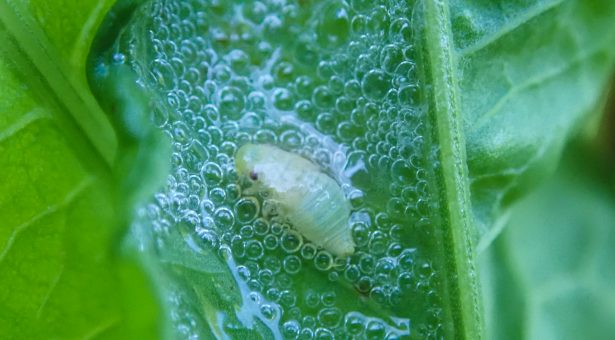
The next time you see those frothy blobs of cuckoo spit that appear on plants this time of year – remember when and where – your evidence could be used to halt the progress of an international plant pathogen.
Spittlebugs/froghoppers emerge from those frothy protective havens to feed as adults on a wide range of plants, trees and crops. These insects, sometimes known as cuckoo-spit insects, are harmless in themselves but of interest to researchers because they can spreading diseases from plant to plant.
Xylella fastidiosa is a bacterial pathogen that lives in the water-transporting Xylem tissues of plants. It is not in the UK but it has devastated olive trees in Italy and is an emerging threat in southern Europe. The pathogen causes disease in more than 550 species across 70 plant families. Symptoms include leaf scorch, wilt, die-back and may lead to plant death and there is no known cure for the disease.
Researchers on BRIGIT, a UK wide-consortium led by the John Innes Centre, are on the trail of spittlebugs/froghoppers and leafhoppers as they try to understand the prevalence and movement of insect vectors. It's a key element of a multi-stranded effort to keep Xylella out of the UK.
You can help: if you see spittle or spittlebugs let us know where and what sort of plants they are on.






